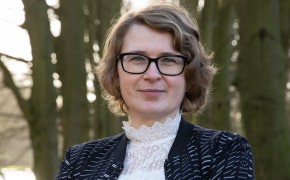With a spatial approach, private, governmental and institutional owners of country estates can better understand past and future developments of their region.
Veluwezoom, named after the glacial ridges that characterise the landscape, has been popular amongst the Dutch elite since the Middle Ages. Here you can find medieval manors, eighteenth-century country estates and twentieth-century country houses. In total, over one hundred historic estates. But until recently, each was working independently of one another. And in 2007, new urbanisation and infrastructure developments were planned which would have a hugely negative impact on the region.
So, the heritage agency Gelders Genootschap initiated a project called ‘Gelderland’s New Arcadia’, which brought together the province of Gelderland with the municipalities of Arnhem, Renkum, Rheden, Rozendaal and Wageningen, and local and institutional landowners.
The aim was to:
● analyse and understand the heritage values of the region
● create awareness of these amongst owners, governments and experts
● investigate ways of strengthening and exploiting these qualities.
The project resulted in several publications, educational and art projects as well as improvements at individual sites. The government have also embedded the estate zone into their policy making.
The main stakeholders are government officials and owners across the four main spatial levels (the country house or castle, the heritage ensemble, the wider cultural landscape, and the regional zone). They are also the main beneficiaries, alongside the public.
Resources needed
The initial project started with external funding of c. 200.000 euro. After that, more regional projects were executed, but also improvements were made to local policies or investments in a particular individual estate. Working together and building a relationship of mutual trust was essential.
Evidence of success
0 people came to the first meeting but in a few years this number had grown to a network of more than 500 estate owners, politicians, experts, tourism organisations etc.
Various publications including an atlas of the estate zone, cycle routes and an oral history book. Over 5000 people have attended theatre and music festivals. Even more important, the zone as a whole and the individual country estates have now been imbedded in local, provincial and national policy!
Difficulties encountered
As yet no large-scale restoration or redevelopment has been implemented on a regional scale, although much has happened at individual estates.
Maintaining partnerships at the end of a discrete project can be challenging. Currently, municipalities are taking the lead, but it is not always easy.
Potential for learning or transfer
The Gelders Arcadia project demonstrates the value of regional partnership and a regional approach. Since it started in 2007, awareness of the value of heritage has grown immensely. There have been improvements in the analysis of past and future processes, and governments and estate owners have worked together with counterparts on similar issues and challenges.
The spatial approach is particularly valuable and transferrable. It focuses on the ways different actors and forces (social, economic and political) interact at particular places, shaping their character, yet at the same time being shaped by them. It can also help governments stimulate processes of conservation and innovation.
Please login to see the expert opinion of this good practice.
Tags: Heritage, Landscape, Regional policy








